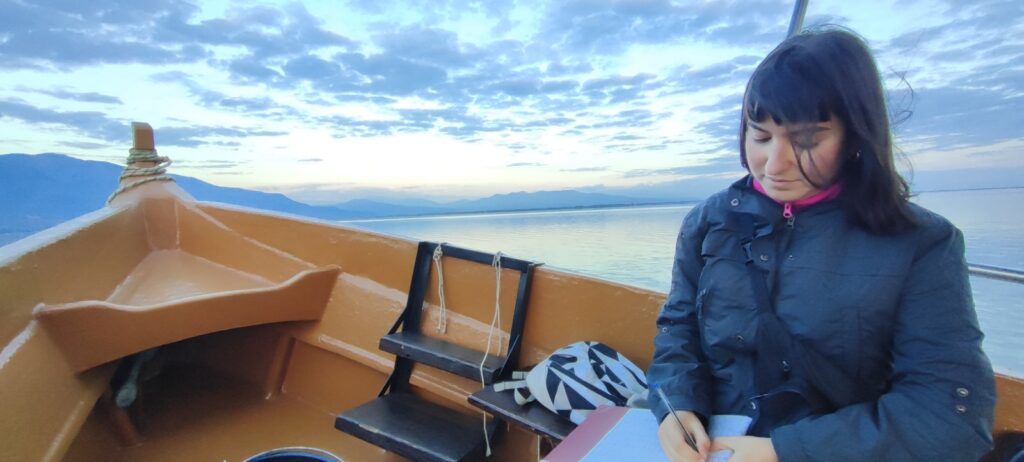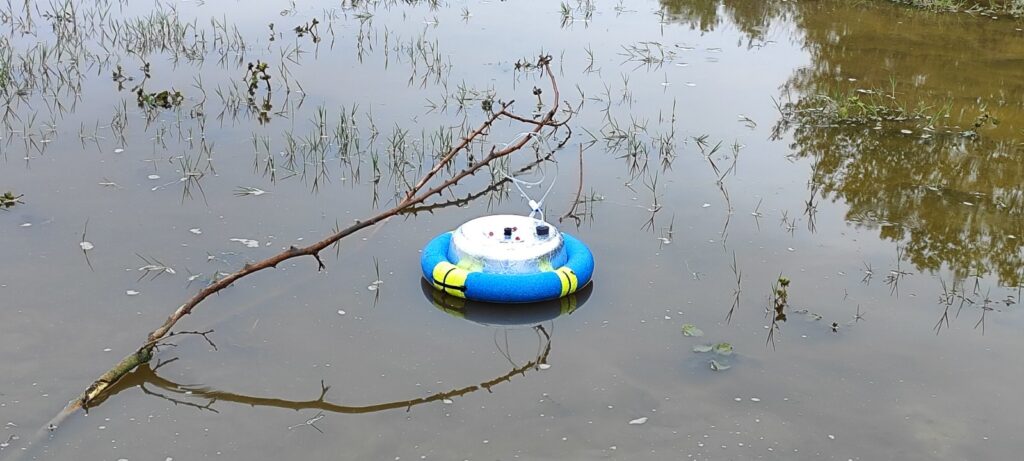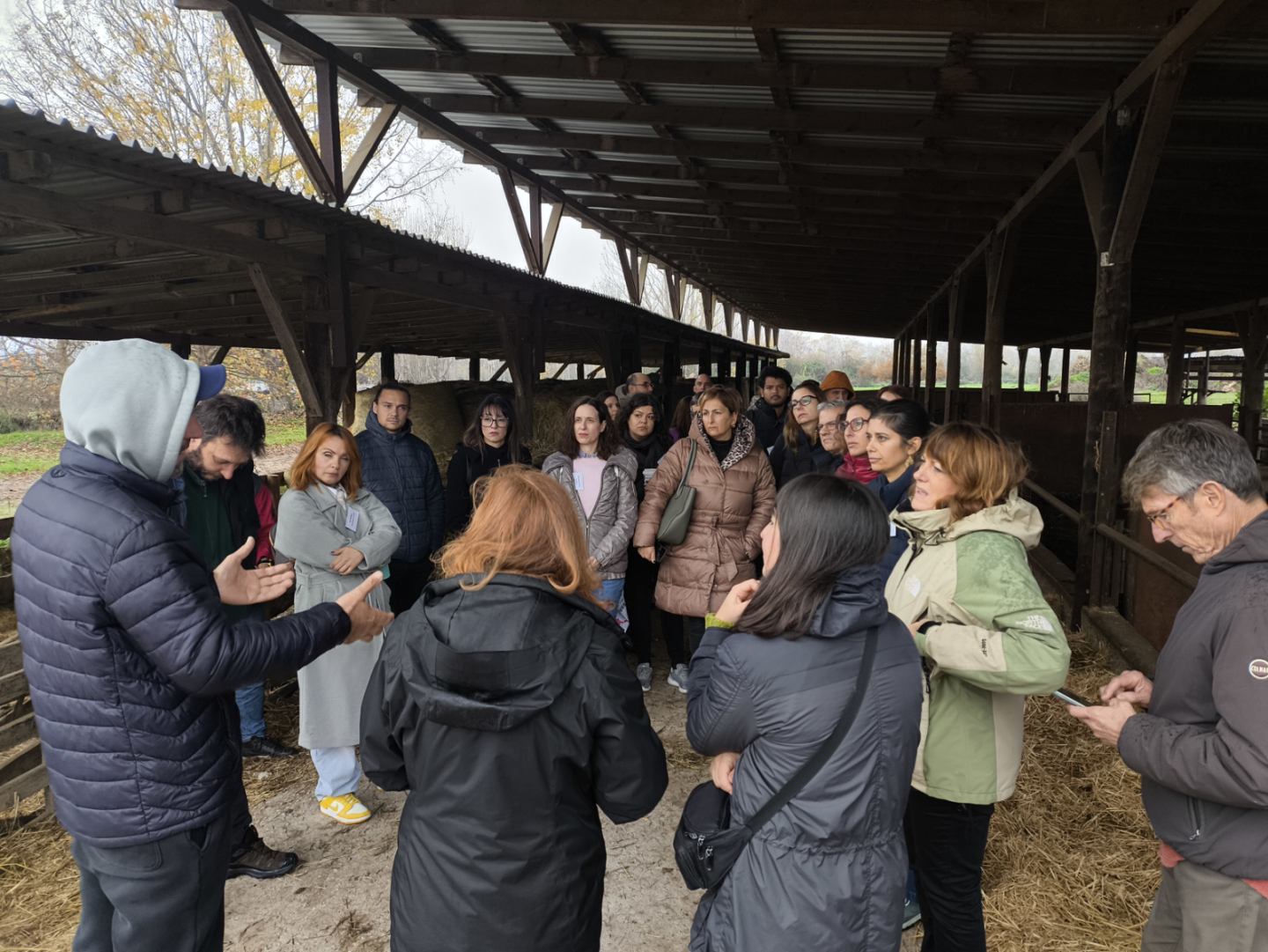Wandering around a lake, one can notice the beautiful landscape of waters and vegetation, birds finding refuge in reeds and shallow waters, buffaloes, horses, or sheep grazing along the shores… yet who can see the carbon dioxide or methane moving between the atmosphere and the water?
The absorption and emission of greenhouse gases is an essential function for ecosystems. These invisible exchanges are not trivial: they constitute a crucial regulating service, helping stabilize the climate and maintain the delicate balance of Earth’s ecosystems. As climate change intensifies, the importance of understanding and protecting these natural processes becomes ever more urgent. Among the ecosystems that act as climate regulators, wetlands play a particularly important role on it.
Over the past century, wetlands around the world have suffered extensive drainage, which, according to current knowledge, releases the carbon that had been sequestered in their sediments and vegetation for decades and long before.
Wetlands are crucial for regulating greenhouse gas fluxes—but what mechanisms underlie this valuable service?
During the past months, NNHMG-EKBY in collaboration with the University of Valencia has been working towards the the estimation of carbon fluxes of Lake Kerkini, one of the most important Ramsar sites in northern Greece. Lake Kerkini represents a significant challenge for this project, as it is a wetland with highly diverse habitats, rich biodiversity, and a particular water regime used for irrigation, flood prevention, and livestock grazing.

Measuraments of carbon fluxes of Lake Kerkini, NNHMG-EKBY, Greece
Our goal is to record how carbon fluxes vary across different areas and seasons. Sampling sites were strategically selected both within and around the lake to investigate which areas function as carbon sinks and which as carbon sources throughout the year. Measurements are taken from deeper areas near the dam to shallower zones close to rich wet meadows, as well as in temporary and permanent ponds formed around the inner delta of the Strymonas River.

Measuraments of carbon fluxes of Lake Kerkini, Greece NNHMG-EKBY
Although humans often perceive lakes and wetlands as static ecosystems, they change over time, affecting their capacity to exchange carbon with the atmosphere. In particular, Lake Kerkini’s landscape varies across seasons, revealing different ‘faces’ of the ecosystem and potentially distinct patterns of carbon exchange.
Earlier this summer, NNHMG-EKBY visited Kerkini to strategically sample the lake’s compartments—both aquatic and terrestrial—and obtain a first glimpse of carbon fluxes during peak water levels. The findings revealed a mosaic of carbon sinks and sources scattered systematically across the lake. In permanently inundated areas (both deep and shallow), CO₂ uptake was recorded, whereas in intermittently flooded or dry outer zones, a net release to the atmosphere was observed, functioning as carbon sources. Like a giant breathing beneath the lake’s surface, carbon dioxide moves continuously between water and atmosphere.

Static chamber gas flux system – Carbon Fluxes measuraments in Lake Kerkini – Greece
The correlation of carbon fluxes and water quality parameters was a primary finding of our research. If confirmed by the full survey, it will further highlight the importance of healthy wetlands in climate regulation.
A more complete picture on the wetland’s capacity to regulate carbon fluxes will be acquired with the consistent monitoring of CO2 fluxes during next seasons, integrated with CH₄ assessments, considering its higher global warming potential. From October 1st to 4th, we had the pleasure of presenting our first findings at the 12th Conference of the Hellenic Ecological Society. Taking the opportunity of the upcoming sampling campaigns, we will continue to share the results and insights from this initial investigation on greenhouse gas exchanges in Greek wetlands.
As the lake begins to ‘dress’ in its autumn colors, NNHMG-EKBY is out in Lake Kerkini again to sample for carbon fluxes.
The project’s findings will contribute to a better understanding of the role of wetlands in climate regulation and the carbon cycle, highlight their climate ecosystem services, and identify land and water management practices that can enhance these services and improve wetland conditions. Our research shows that ecosystems, beyond being areas of natural beauty and providers of resources for human society, also act as mechanisms that sustain the planet’s fragile stability and balance.
Often unseen, this silent process is essential for life on Earth.
The estimation of the wetland’s carbon balance is carried out within the framework of the Interreg Euro- MED project Wetland4Change, under the scientific coordination of the University of Valencia.



